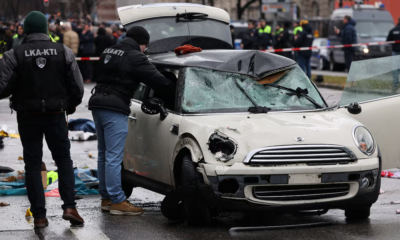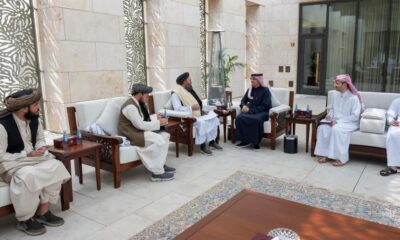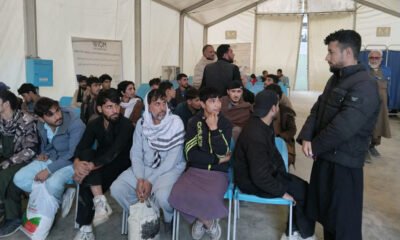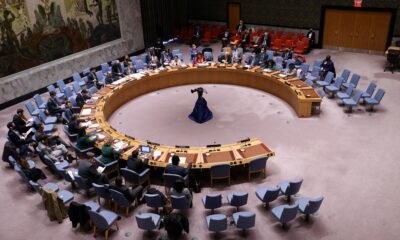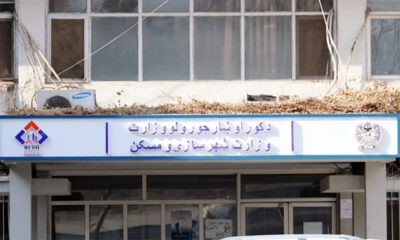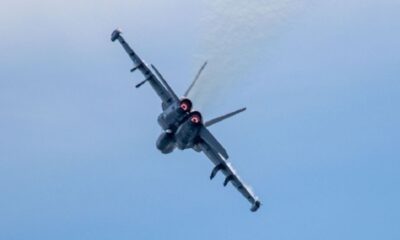World
Israel, Hamas agree to brief pauses in fighting for polio vaccinations
At the end of the first day, the territory’s health ministry said at least 72,611 children had taken the vaccine.
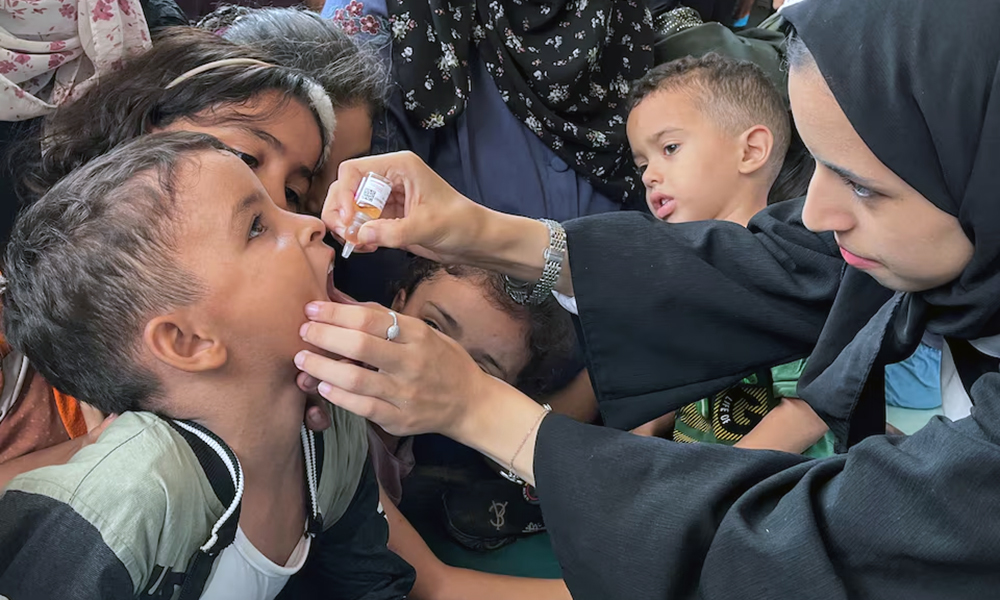
The United Nations, in collaboration with Palestinian health authorities, began to vaccinate 640,000 children in the Gaza Strip on Sunday, with Israel and Hamas agreeing to brief pauses in their 11-month-old war to allow the campaign to go ahead, Reuters reported.
The World Health Organisation (WHO) confirmed last month that a baby was partially paralysed by the type 2 polio virus, the first such case in the territory in 25 years.
The campaign began on Sunday in areas of central Gaza, and will move to other areas in coming days. Fighting will pause for at least eight hours on three consecutive days.
The WHO said the pauses will likely need to extend to a fourth day and the first round of vaccinations will take just under two weeks.
At the end of the first day, the territory’s health ministry said at least 72,611 children had taken the vaccine.
Children, escorted by members of their families, crowded a UN-run clinic in the central Gaza city of Deir Al-Balah, where around one million people were sheltering, according to Palestinian officials. Medical staffers marked children who got the drops with a pen on their fingers, read the report.
“I came to the UNRWA clinic today to vaccinate my daughters against polio and God willing we won’t see any more diseases other than the diseases we are already experiencing. I hope we will go back to our homes safe and sound,” said Gaza mother Afnan Al-Muqayyad.
Polio was just one of many of Al-Muqayyad’s concerns.
“Skin diseases are widespread, there are no detergents, detergents are very expensive and we can’t afford them. Also, the food is very expensive, everything is expensive, and the children’s weight is dropping, they were fine before but now they’re becoming very thin. I hope God will set things straight,” she said.
Juliette Touma, communications director of UNRWA, the U.N. Palestinian refugee agency, said the vaccination campaign was massive and “one of the most complex in the world.”
“Today is test time for parties to the conflict to respect these area pauses to allow the UNRWA teams and other medical workers to reach children with these very precious two drops. It’s a race against time,” Touma told Reuters.
Israel and Hamas, who have so far failed to conclude a deal that would end the war, said they would cooperate to allow the campaign to succeed, Reuters reported.
WHO officials say at least 90% of the children need to be vaccinated twice with four weeks between doses for the campaign to succeed, but it faces huge challenges in Gaza, which has been largely destroyed by the war.
“Children continue to be exposed, it knows no borders, checkpoints or lines of fighting. Every child must be vaccinated in Gaza and Israel to curb the risks of this vicious disease spreading,” said Touma.
Meanwhile, Israeli forces continued to battle Hamas-led militants in several areas across the Palestinian enclave. Residents said Israeli army troops blew up several houses in Rafah, near the border with Egypt, while tanks continued to operate in the northern Gaza City suburb of Zeitoun.
On Sunday, Israel recovered the bodies of six hostages from a tunnel in southern Gaza, saying they were killed not long before Israeli troops reached them, read the report.
The war was triggered after Hamas militants on Oct. 7 stormed into southern Israel killing 1,200 people and taking more than 250 hostages by Israeli tallies.
Since then, at least 40,691 Palestinians have been killed and 94,060 injured in Gaza, the enclave’s health ministry says.
World
US Navy jet crashed off San Diego coast, crew members safe

A U.S. Navy jet crashed off the coast of San Diego on Wednesday but both crew members were safely recovered, a U.S. official said.
The official, who was speaking on the condition of anonymity, said the EA-18G Growler, used for electronic warfare, was based out of Washington State, Reuters reported.
The reason for the crash was unclear, but the Coast Guard had rescued both the pilots from the two-seater jet.
U.S. military aviation safety has been in focus after an Army Black Hawk helicopter collided with a passenger jet in Washington D.C. last month.
World
Trump says Putin and Zelenskiy want peace; phone calls kick off talks to end Ukraine war
The Kremlin earlier said Putin and Trump had agreed to meet, and Putin had invited Trump to visit Moscow. Trump said their first meeting would “probably” take place soon in Saudi Arabia.
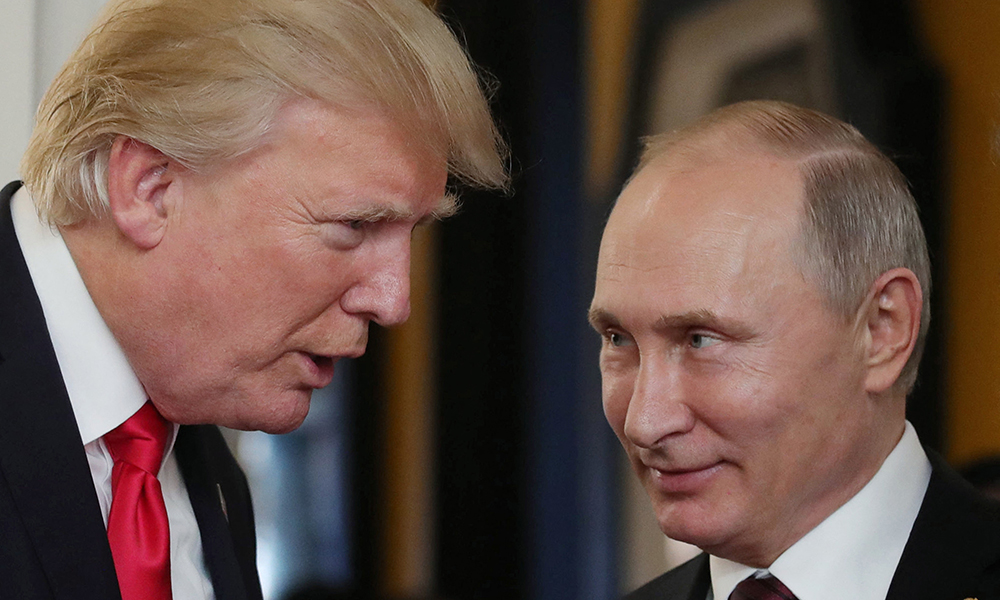
Donald Trump said both Russian President Vladimir Putin and Ukrainian President Volodymyr Zelenskiy expressed a desire for peace in separate phone calls with him on Wednesday, and Trump ordered top U.S. officials to begin talks on ending the war in Ukraine, Reuters reported.
The conversations came after Trump’s defense secretary earlier said Kyiv would have to give up its long-held goals of joining the NATO military alliance and regaining all of its territory seized by Russia, signaling a dramatic shift in Washington’s approach to the conflict.
After speaking with Putin for more than an hour, Trump said the Russian leader, who launched a full-scale invasion of Ukraine in 2022, wants the war to end and they discussed “getting a ceasefire in the not-too-distant future.”
“He wants it to end. He doesn’t want to end it and then go back to fighting six months later,” Trump told reporters in the Oval Office.
“I think we’re on the way to getting peace. I think President Putin wants peace, President Zelenskiy wants peace and I want peace. I just want to see people stop getting killed,” he added.
Trump has long said he would quickly end the war in Ukraine, without spelling out exactly how he would accomplish this, read the report.
The Kremlin earlier said Putin and Trump had agreed to meet, and Putin had invited Trump to visit Moscow. Trump said their first meeting would “probably” take place soon in Saudi Arabia.
In a post on his social media platform, he said Secretary of State Marco Rubio, CIA Director John Ratcliffe, national security adviser Michael Waltz and Middle East envoy Steve Witkoff would lead negotiations on ending the war.
Trump and Zelenskiy spoke after Trump’s call with Putin, and Zelenskiy’s office said the conversation lasted for about an hour.
“I had a meaningful conversation with @POTUS. We… talked about opportunities to achieve peace, discussed our readiness to work together …and Ukraine’s technological capabilities… including drones and other advanced industries,” Zelenskiy wrote on X.
No Ukraine peace talks have been held since the early months of the conflict, now approaching its third anniversary. Trump’s predecessor, Joe Biden, oversaw billions of dollars of military and other aid to Kyiv and had no direct contact with Putin after Russia’s invasion, Reuters reported.
Russia occupies around a fifth of Ukraine and has demanded Kyiv cede more territory and be rendered permanently neutral under any peace deal.
Ukraine demands Russia withdraw from captured territory and says it must receive NATO membership or equivalent security guarantees to prevent Moscow from attacking again.
European powers, including Britain, France and Germany, said on Wednesday they had to be part of any future negotiations on the fate of Ukraine, underscoring that only a fair accord with security guarantees would ensure lasting peace. They said they were ready to enhance support for Ukraine and put it in a position of strength.
Earlier on Wednesday, Defense Secretary Pete Hegseth delivered the new administration’s bluntest statement so far on its approach to the war, saying Kyiv could not realistically hope to return to previous borders or join NATO.
“We want, like you, a sovereign and prosperous Ukraine. But we must start by recognising that returning to Ukraine’s pre-2014 borders is an unrealistic objective,” Hegseth told a meeting at NATO headquarters in Brussels. “Chasing this illusionary goal will only prolong the war and cause more suffering.”
Russia in 2014 annexed Crimea, which Ukraine and many Western countries consider to be occupied Ukrainian territory.
Hegseth said any durable peace must include “robust security guarantees to ensure that the war will not begin again”. But he said U.S. troops would not be deployed to Ukraine as part of such guarantees.
Zelenskiy, hoping to keep Trump interested in continuing to support his country, has lately proposed a deal under which the United States would invest in minerals in Ukraine.
Trump’s Treasury Secretary Scott Bessent, in Kyiv on Wednesday on the first visit by a member of Trump’s cabinet, said such a mineral deal could serve as a “security shield” for Ukraine after the war, read the report.
Trump also said Rubio and Vice President JD Vance will hold talks about the war on Friday in Munich, where Ukrainian officials were expected to attend an annual security conference.
The new diplomacy followed a U.S.-Russia prisoner swap that got under way on Tuesday, which the Kremlin said could help build trust between the two countries.
Russia on Tuesday freed American schoolteacher Marc Fogel, who was serving a 14-year sentence in a Russian prison, in exchange for a Russian cybercrime boss imprisoned in the U.S., according to a official.
World
Netanyahu says Israel will end Gaza ceasefire if hostages not returned on Saturday
U.S. President Donald Trump, a close ally of Israel, has said that Hamas should release all of the hostages by Saturday.
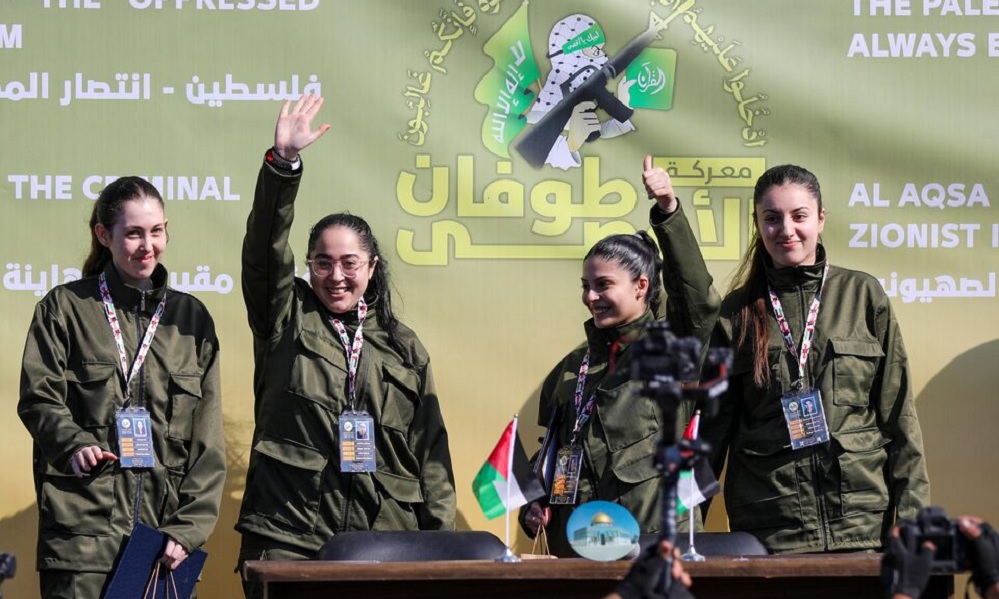
Israeli Prime Minister Benjamin Netanyahu declared on Tuesday the ceasefire in Gaza would end and the military would resume fighting Hamas until it was defeated if the Palestinian militant group did not release hostages by midday Saturday, Reuters reported.
Following Netanyahu’s ultimatum, Hamas issued a statement renewing its commitment to the ceasefire and accusing Israel of jeopardizing the ceasefire.
The Israeli announcement came after Netanyahu met with several key ministers, including defence, foreign affairs and national security, who he said gave the ultimatum their full support.
After nearly 16 months of war, Hamas has gradually been releasing hostages since the first phase of a ceasefire began on January 19, but on Monday said it would not free any more until further notice over accusations Israel was violating the deal.
“If Hamas does not return our hostages by Saturday noon – the ceasefire will end and the IDF (military) will return to intense fighting until Hamas is finally defeated,” Netanyahu said.
It was not immediately clear if Netanyahu meant Hamas should release all hostages held in Gaza or just the three who had been expected to be released on Saturday under the ceasefire.
His office did not immediately respond to a Reuters request seeking comment on the prime minister’s remarks.
U.S. President Donald Trump, a close ally of Israel, has said that Hamas should release all of the hostages by Saturday, read the report.
The prime minister also said he had ordered the military to gather forces inside and around Gaza, with the military announcing shortly after it was deploying additional forces to Israel’s south including the mobilization of reservists.
A Hamas official earlier said that Israeli hostages could only be brought home if the ceasefire was respected, dismissing the “language of threats” after Trump said he would “let hell break out” if they were not freed.
“Trump must remember there is an agreement that must be respected by both parties, and this is the only way to bring back the (Israeli) prisoners,” senior Hamas official Sami Abu Zuhri told Reuters.
Hamas has said Israel has violated the ceasefire with several deadly shootings as well as by holding up some aid deliveries and impeding the return of Gazans to the strip’s north.
Israel denies holding back aid and says it has fired on people who disregarded warnings not to approach Israeli troops.
So far, 16 of 33 hostages have been freed as part of the ceasefire deal’s first phase due to last 42 days. Five Thai hostages were also let go in an unscheduled release.
In exchange, Israel has released hundreds of Palestinian prisoners and detainees, including prisoners serving life sentences for deadly attacks and others detained during the war and held without charge, Reuters reported.
An Israeli group representing families of hostages urged Netanyahu to stick to the ceasefire agreement.
“We must not go backwards. We cannot allow the hostages to waste away in captivity,” the hostages forum said.
There are 76 hostages still held in Gaza, more than 35 of them believed to be dead, according to Israeli media.
Gaza, one of the world’s most densely populated areas, has been devastated by Israel’s military offensive. The enclave is short of food, water and shelter, and in need of billions of dollars in foreign aid.
More than 48,000 Palestinians have been killed in the war, the Gaza health ministry says, and nearly all of Gaza’s pre-war population of 2.3 million has been internally displaced by the conflict, read the report.
Some 1,200 people were killed in the October 7, 2023 Hamas-led attack on southern Israeli communities and about 250 were taken to Gaza as hostages, according to Israeli tallies.
Trump said last week the U.S. should take over Gaza and move out more than 2 million Palestinian residents so the enclave can be developed into the “Riviera of the Middle East”. Netanyahu praised the plan and said on Tuesday the security cabinet endorsed it.
Trump’s plan has enraged Palestinians and Arab leaders and upended decades of U.S. policy that endorsed a two-state solution in which Israel and a Palestinian state would coexist.
The forcible displacement of a population under military occupation is a war crime banned by the 1949 Geneva conventions.
Trump restated his position as he met Jordan’s King Abdullah on Tuesday at the White House amid widespread opposition to his plan among Washington’s Arab allies, including Jordan.
Trump said on Tuesday that he believed there would be a parcel of land in Jordan, Egypt and someplace else where Palestinians can be resettled.
Egypt rejected any proposal to allocate land to Gaza residents, the state-affiliated Al Qahera News TV reported on Tuesday, citing Egyptian sources.
North Korean state media on Wednesday denounced Trump’s Gaza proposal and accused Washington of extortion.
“The world is now boiling like a porridge pot over the U.S.’ bombshell declaration,” KCNA said.
Palestinians fear a repeat of what they call the Nakba, or catastrophe, when hundreds of thousands of Palestinians fled or were driven out during the 1948 war that accompanied Israel’s creation. Israel denies they were forced out, Reuters reported.
For Jordan, Trump’s talk of resettlement comes dangerously close to its nightmare of a mass expulsion of Palestinians from both Gaza and the West Bank, echoing an idea long promoted by ultra-nationalist Israelis of Jordan becoming an alternative Palestinian home.
Gazans interviewed by Reuters criticised Trump for saying he would be prepared for “hell” to break out if all the Israeli hostages were not released by noon on Saturday.
“Hell worse than what we have already? Hell worse than killing? The destruction, all the practices and human crimes that have occurred in the Gaza Strip have not happened anywhere else in the world,” said Jomaa Abu Kosh, a Palestinian from Rafah in southern Gaza, standing beside demolished homes.
-
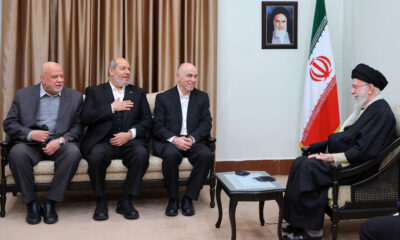
 Regional4 days ago
Regional4 days agoIran leader Khamenei meets top Hamas leaders in Tehran, state TV says
-
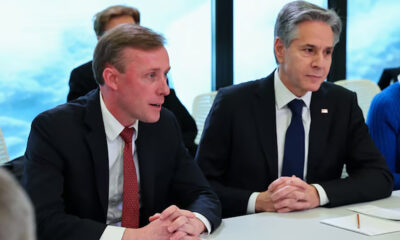
 World4 days ago
World4 days agoTrump revokes security clearances for Antony Blinken, Jake Sullivan
-

 International Sports4 days ago
International Sports4 days agoDubai Capitals take on Desert Vipers in epic DP World ILT20 Final
-
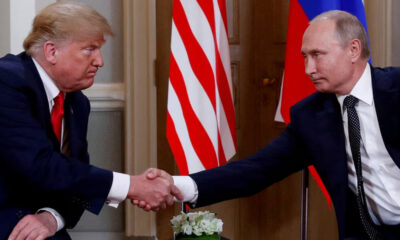
 World3 days ago
World3 days agoTrump says US is making progress with Russia, declines to discuss talks with Putin
-
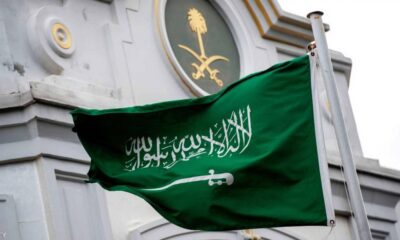
 Latest News4 days ago
Latest News4 days agoSaudi Arabia rejects Israel PM Netanyahu’s remarks on displacing Palestinians
-
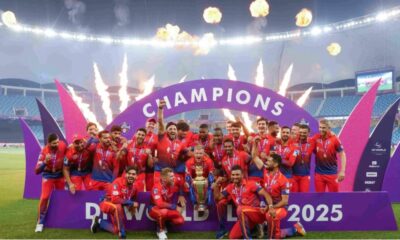
 International Sports3 days ago
International Sports3 days agoDubai Capitals clinch maiden title at ILT20
-
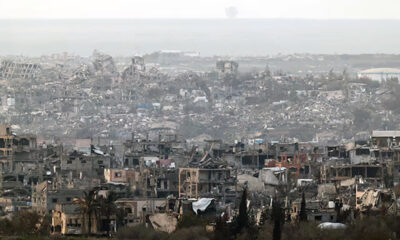
 Regional3 days ago
Regional3 days agoEgypt to host emergency Arab summit to discuss ‘serious’ Palestinian developments
-
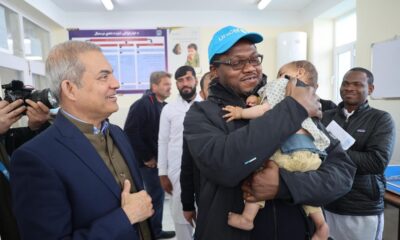
 Latest News4 days ago
Latest News4 days agoUNICEF chief in Afghanistan reiterates every child’s right to a healthy life


